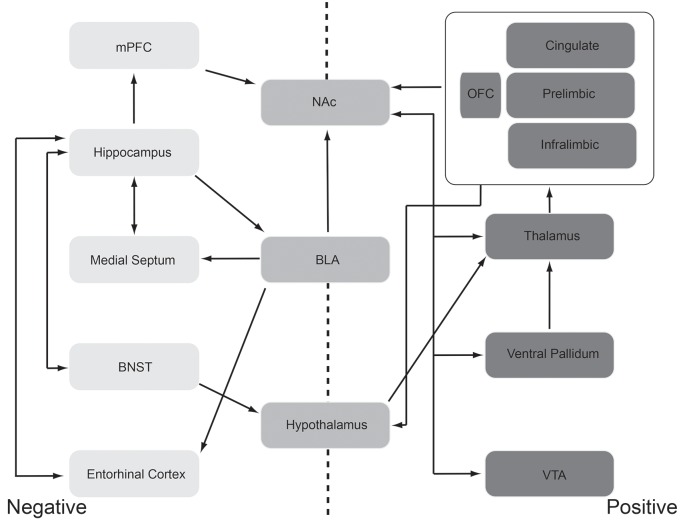Figure 2.
Schematic representation of the “affectome” (Becker et al., 2019), i.e., a network of mood/emotion-related brain regions. This schematic should be interpreted with the caveat that even well-identified, mood/emotion-related brain regions are generally very heterogeneous structures both structurally and functionally. Regions most commonly aligned with negative emotions (e.g., aversion, anxiety, fear learning, etc.) are shown lightly shaded and to the left and those associated with positive emotions (e.g., attraction, reward) are shown darkly shaded to the right. Functionally heterogeneous regions are shown in the center. These regions have been identified in both human and animal model research as being important for the expression emotional responses, and in some cases the recognition of emotional cues in others, through a variety of techniques including activity suppression/lesions, activation, electrophysiology, neuroanatomy, and functional imaging. See text for a discussion of support for this network. Abbreviations: BLA, the basolateral nucleus of the amygdala; BNST, bed nucleus of the stria terminalis; mPFC, medial prefrontal cortex; NAc, nucleus accumbens; OFC, orbitofrontal cortex; VTA, ventral tegmental area.

